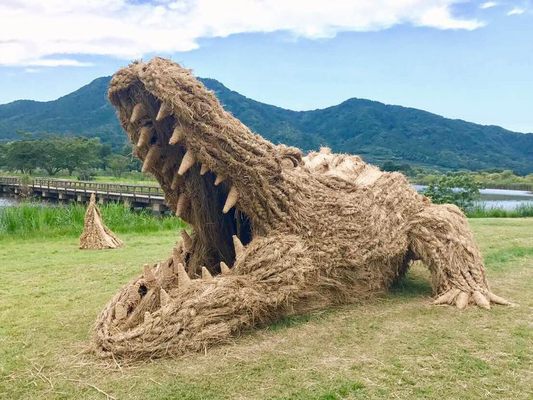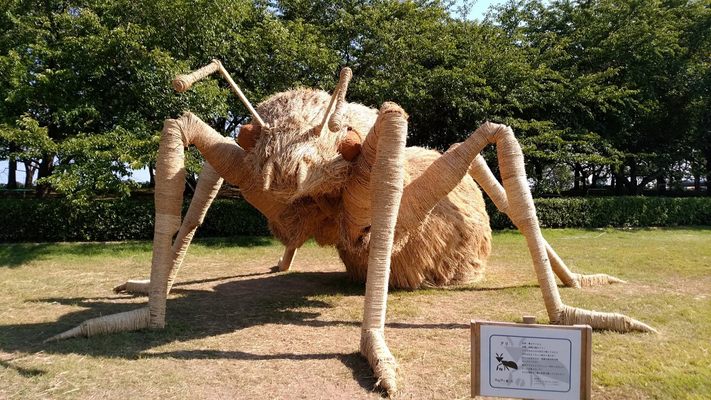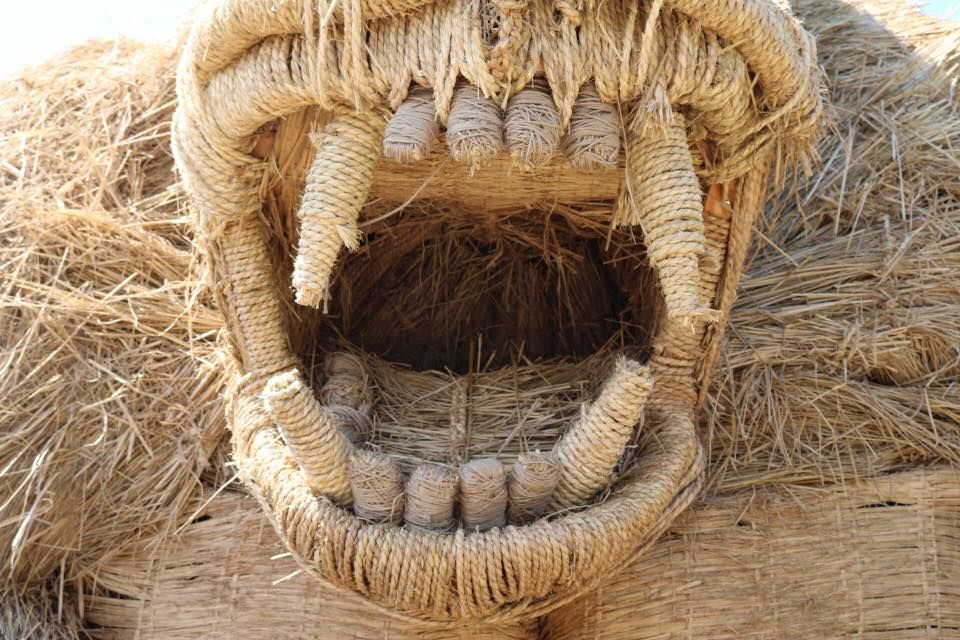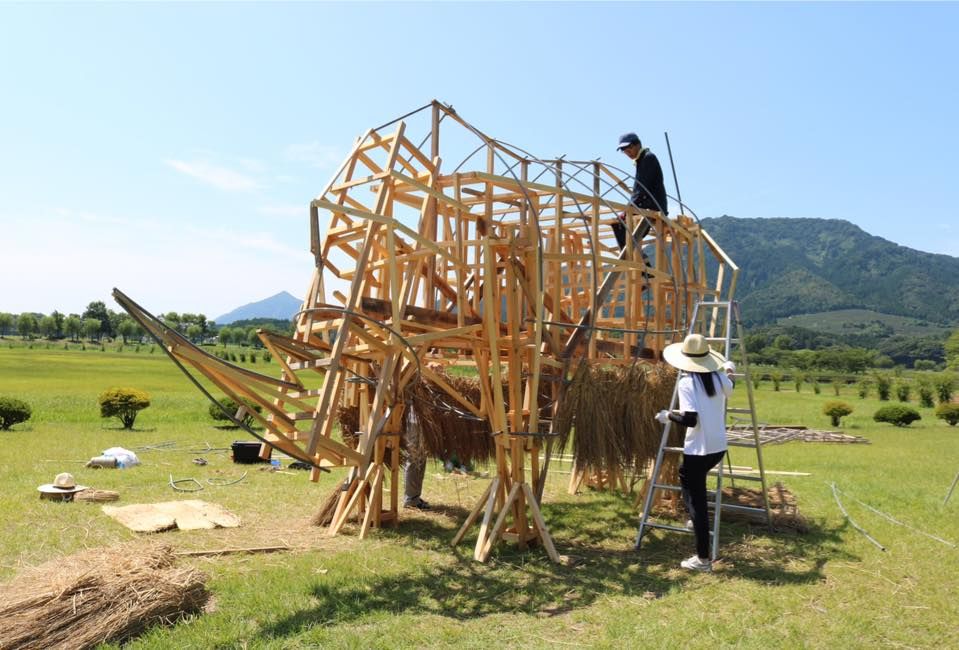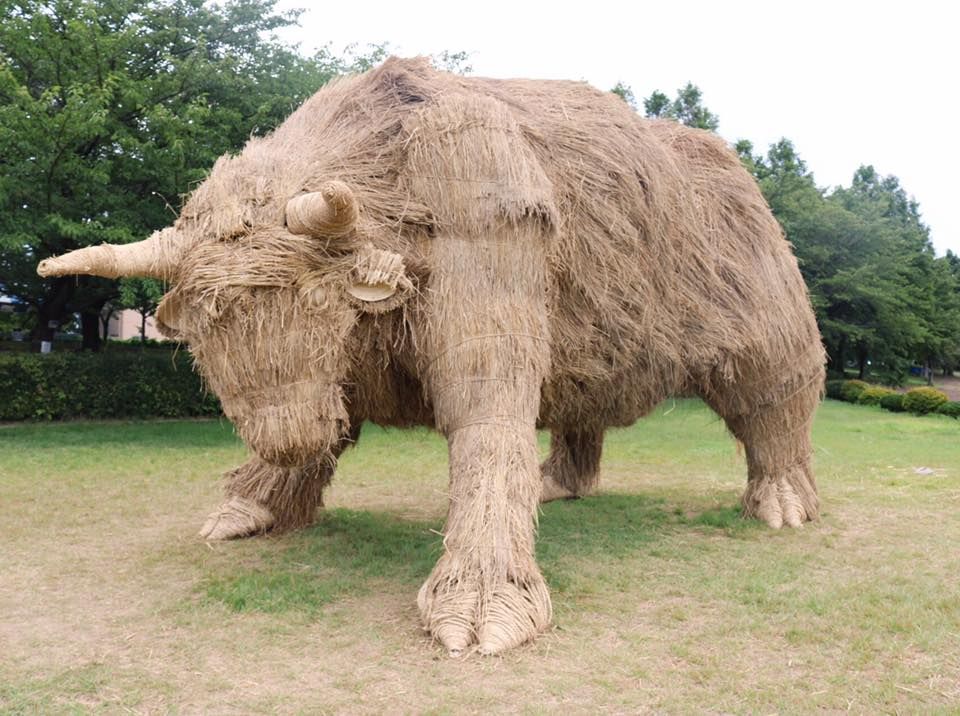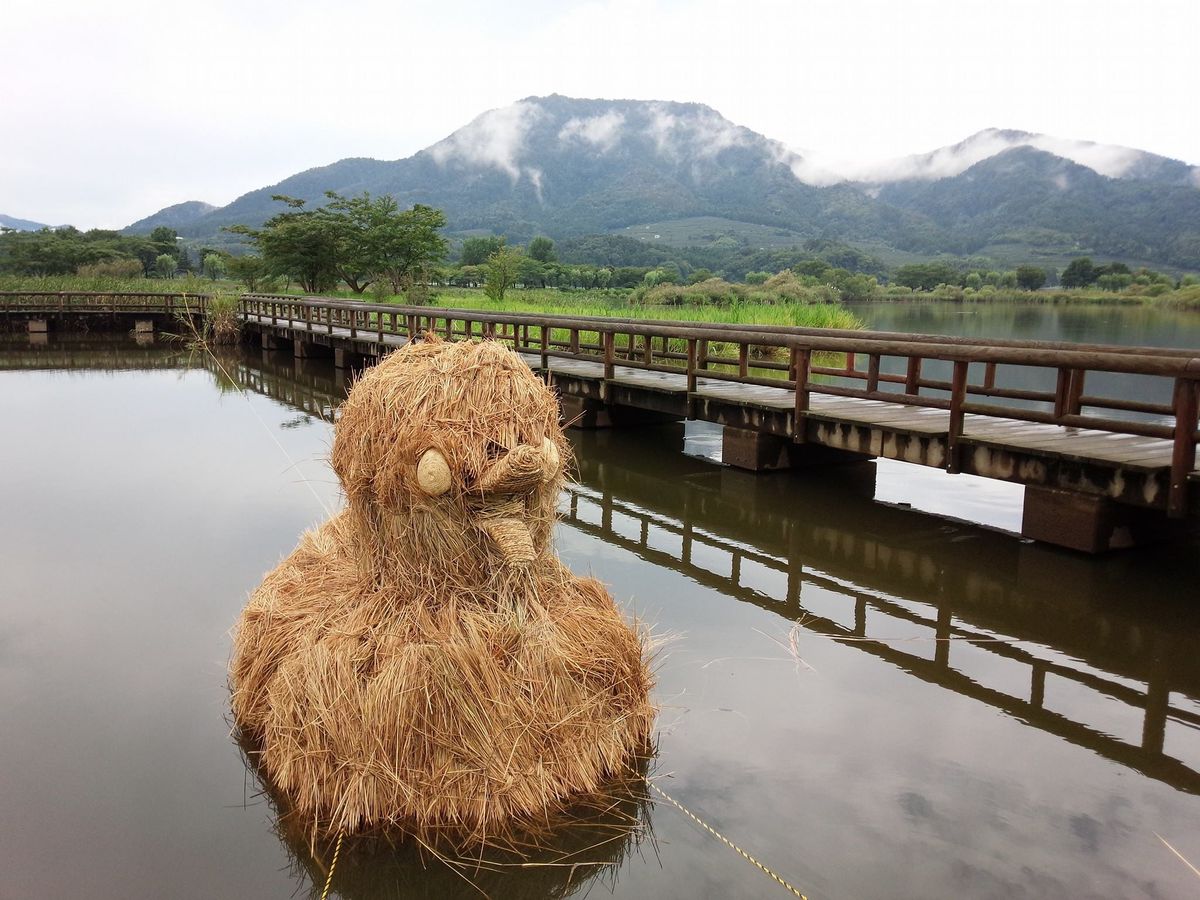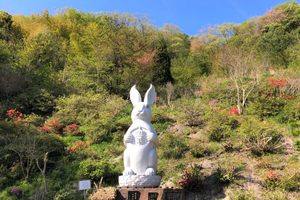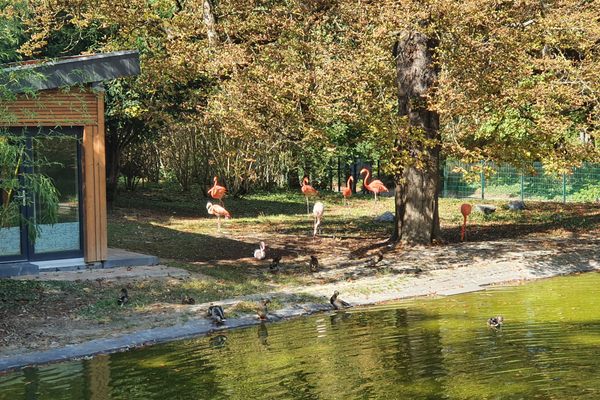About
The rural, coastal Niigata prefecture in Northern Japan is known for its wealth of rice paddies, which produce a rich harvest each fall. After the rice is harvested and the grain extracted, a huge amount of rice straw is leftover, called wara.
Instead of going to waste, the excess wara is reused in many ways: for roofs, fertilizer, livestock feed, and, historically, to make various goods before it was replaced by more modern materials. In the region's capital city, Niigata, it's put to an even more creative use, transformed into giant, fantastic animal sculptures.
For the last decade, students from Musashino Art University in Tokyo have headed north to Niigata each fall to create wonderful sculptures with the leftover rice straw. These golden artworks, made by piecing patches of braided straw over a wooden frame, can be seen on display at the annual Wara Art Festival in Uwasekigata Park. In 2017, to celebrate the 10th anniversary of the festival, the students were challenged to build the creatures twice as large as usual, and supersized gorillas, rhinos, and dinosaurs filled the open field.
Related Tags
Know Before You Go
The Wara Art Festival is held each year starting in late August and the sculptures remain up until the end of October.
Hidden Japan: Sado Island, Nara & Kyoto
Explore a different side of Japan.
Book NowCommunity Contributors
Added By
Published
March 6, 2018

